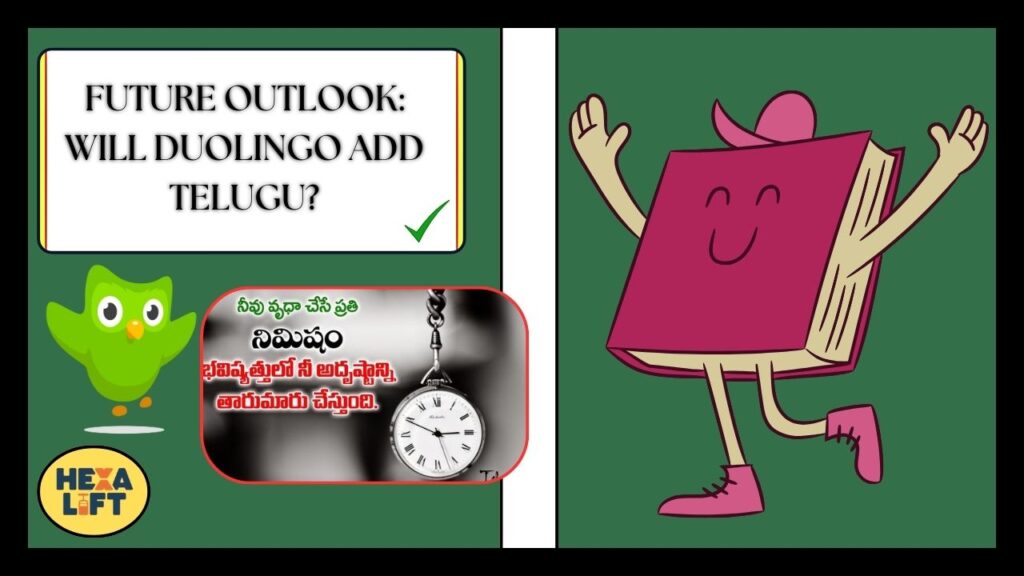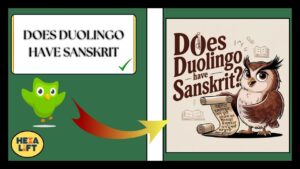Does Duolingo Have Telugu?: In the ever-expanding world of language learning apps, Duolingo stands as one of the most popular platforms with its gamified approach and wide selection of languages.
For the 90+ million Telugu speakers worldwide and those interested in learning this beautiful Dravidian language, a common question arises: Does Duolingo offer Telugu?
This comprehensive guide explores the current status of Telugu on Duolingo in 2025, why it matters, and what alternatives exist for dedicated language learners.
Telugu Language: Why It Matters
Telugu isn’t just another language it’s a cultural powerhouse with deep historical roots and growing global relevance.
As the third most-spoken language in India after Hindi and Bengali, Telugu holds official language status in the states of Andhra Pradesh and Telangana.
Beyond India’s borders, significant Telugu-speaking communities thrive across the United States, Australia, the United Kingdom, and parts of Southeast Asia.
What makes Telugu particularly fascinating is its classification as an agglutinative language, where words are built by combining smaller meaningful units called morphemes.
This creates a rich linguistic tapestry that’s both challenging and rewarding to learn.
“Telugu is celebrated as the ‘Italian of the East’ due to its melodic quality and rhythmic flow.” – Language scholars often note
The language’s cultural importance extends far beyond mere communication. Telugu boasts:
- A literary tradition spanning over 2,000 years
- A thriving film industry (Tollywood) producing hundreds of films annually
- Rich performing arts traditions including classical dance forms
- Distinctive festivals and cultural practices
For tech professionals, learning Telugu offers practical benefits as well. Hyderabad, a major Telugu-speaking city, has emerged as one of India’s premier technology hubs, housing offices of companies like Google, Microsoft, and Amazon.
Also Read: Where Is The Duolingo Shop? Ultimate Guide For 2025
Duolingo’s Current Telugu Status (2025)
As of March 2025, Duolingo does not offer a Telugu course for English speakers.
This comes as a disappointment to many prospective learners hoping to use the platform’s accessible approach to master this important Indian language.
However, there is a silver lining for Telugu speakers. In late 2024, Duolingo launched a Telugu-to-English course, allowing native Telugu speakers to learn English through the platform.
This development, while not helpful for those wanting to learn Telugu, shows the language is at least on Duolingo’s radar.
Here’s how Telugu compares to other Indian language offerings on the platform:
| Language | Course for English Speakers | Course for Native Speakers |
|---|---|---|
| Hindi | ✅ Available | ✅ Hindi → English |
| Tamil | ❌ Not available | ✅ Tamil → English |
| Telugu | ❌ Not available | ✅ Telugu → English |
| Bengali | ✅ Available | ✅ Bengali → English |
| Punjabi | ❌ Not available | ✅ Punjabi → English |
The most recent official statement from Duolingo regarding Telugu came through their blog in October 2024, where they mentioned: “We’re constantly evaluating new languages to add to our platform based on user demand and resource availability.
While Telugu isn’t currently available for English speakers, we recognize its importance and are considering it for future development.”
Inside Duolingo’s Language Selection Process
Understanding why certain languages appear on Duolingo while others don’t requires looking behind the curtain at their language selection process.
Duolingo doesn’t randomly choose which languages to develop several key factors influence their decisions:
User Demand and Market Analysis
Duolingo closely monitors:
- Search volume for specific language pairs
- User requests through official channels
- Global language learning trends
- Commercial viability of each language option
Technical Considerations
Not all languages are equally easy to implement in app form. Factors affecting development include:
- Script complexity: Languages with unique writing systems like Telugu Lipi require additional technical work
- Available linguistic resources (dictionaries, pronunciation guides)
- Challenges in creating automated speech recognition
- Difficulty in designing effective exercises for specific language structures
The Incubator Program
Historically, Duolingo has relied heavily on its Incubator program a system where volunteer contributors help build courses.
For a Telugu course to materialize, a dedicated team of bilingual volunteers would need to commit significant time to:
- Creating thousands of sentences
- Recording audio pronunciations
- Designing a progression of lessons
- Testing and refining content
The resource-intensive nature of course creation explains why Duolingo prioritizes languages with either massive global speaker populations (like Mandarin) or high learning demand (like Spanish).

Telugu Language Structure: Learning Challenges
The unique characteristics of Telugu present both fascinating opportunities and distinct challenges for language learners and app developers.
Understanding these features helps explain why creating effective Telugu learning materials requires specialized attention.
Script and Writing System
Telugu uses a syllabic script called Telugu Lipi that’s visually distinct and beautiful, but presents a learning curve for beginners:
- Contains 56 letters (16 vowels, 36 consonants, 4 other symbols)
- Characters represent complete syllables rather than individual sounds
- Features rounded shapes derived from its historical development
- Requires understanding complex rules for combining characters
Phonetic Structure and Pronunciation
The phonetic structure of Telugu contributes to its famous melodic nature:
- Rich inventory of distinct sounds not found in English
- Clear distinction between aspirated and unaspirated consonants
- Complex system of long and short vowels
- Natural rhythmic quality in normal speech
Grammatical Features
As an agglutinative language, Telugu grammar works differently from English:
- Word order typically follows Subject-Object-Verb pattern
- Uses postpositions instead of prepositions
- Complex noun classification system
- Verbs change form based on gender, number, and social relationship factors
These linguistic characteristics make Telugu a fascinating language to learn but require thoughtfully designed learning materials.
A quality app needs to address these unique features through specialized exercises and clear explanations something that represents a significant investment for platforms like Duolingo.
Also Read: Duolingo Max Price: The Comprehensive Guide For 2025
Best Telugu Learning Alternatives in 2025
Just because Duolingo doesn’t offer Telugu doesn’t mean quality resources don’t exist. Several excellent alternatives have emerged to fill this gap, each with their own strengths and approaches.
Top Apps for Learning Telugu
| App Name | Price | Key Features | Best For |
|---|---|---|---|
| Ling | $14.99/month or $99.99/year | Interactive dialogues, comprehensive grammar, speech recognition | Serious learners wanting structured approach |
| Pimsleur | $19.95/month | Audio-focused, conversation-based, minimal writing | Learners focused on speaking skills |
| Mango Languages | $7.99/month or $79.99/year | Cultural notes, literal translations, grammar insights | Understanding cultural context |
| 50Languages | Free with ads, $9.99 for ad-free | Basic phrases, vocabulary building, audio by native speakers | Beginners building fundamental vocabulary |
| Drops | Free (5 min/day), Premium from $8.49/month | Visual learning, gamified approach, focus on vocabulary | Visual learners wanting bite-sized sessions |
Language Exchange and Tutoring Options
For those seeking human interaction and personalized guidance:
- Tandem: Connect with native Telugu speakers for language exchange
- iTalki: Find professional Telugu tutors starting from $5-15 per hour
- Preply: Access vetted Telugu teachers with reviews and transparent pricing
- HelloTalk: Chat with Telugu speakers worldwide for mutual language practice
Free Online Resources
Budget-conscious learners can access several quality resources at no cost:
- TeluguOne: Offers free beginner lessons with audio
- Learn Telugu in 30 Days: Popular structured program available as free PDF
- NPTEL Telugu Courses: Academic-quality video lessons from Indian universities
- YouTube channels: Several dedicated educators provide free Telugu lessons
“The best language learning happens when using multiple resources that complement each other.” – Polyglot and language educator Timothy Doner
Community-Driven Telugu Learning Resources
Beyond commercial apps, vibrant communities of Telugu enthusiasts have created valuable learning ecosystems.
These community-driven resources often provide authentic learning experiences that commercial platforms can’t match.
Online Communities and Forums
Active communities where learners can ask questions and practice include:
- r/TeluguBhasha subreddit: Over 12,000 members discussing language learning techniques
- Telugu Learners Facebook Group: 25,000+ members sharing resources and tips
- Discord servers: Several language learning servers with dedicated Telugu channels
- Telegram groups: Instant help from native speakers and fellow learners
YouTube Telugu Teachers
Several YouTube creators have dedicated their channels to teaching Telugu:
- Telugu Ammayi: Focuses on conversational Telugu with real-life situations
- Learn Telugu with Kaushik: Grammar-focused approach with clear explanations
- Telugu Kathalu: Uses stories and folk tales to teach vocabulary and expression
- Spoken Telugu: Quick lessons focused on daily communication needs
Open Educational Resources
Universities and nonprofits have created high-quality materials available for free:
- University of Pennsylvania’s Telugu Course: Complete academic materials online
- Digital Dialects Telugu Games: Interactive vocabulary builders for beginners
- AIIS Telugu Materials: American Institute of Indian Studies resource collection
- TeluguPaatashala: Community-maintained vocabulary and grammar guides
What makes these community resources particularly valuable is their authenticity they’re often created by native speakers passionate about sharing their language and culture.

Future Outlook: Will Duolingo Add Telugu?
Will Telugu speakers and learners eventually see their language on the world’s most popular language app?
Based on several indicators and trends, we can make some educated projections about the likelihood of Telugu appearing on Duolingo.
Positive Indicators
Several factors suggest Telugu could be added to Duolingo in the future:
- Growing global interest: Immigration patterns and India’s economic rise have increased international interest in Indian languages
- Tech industry connections: Telugu’s importance in tech hub Hyderabad aligns with the interests of many Duolingo users
- Existing infrastructure: The Telugu-to-English course means some fundamental Telugu assets already exist in the Duolingo system
- Community advocacy: Organized campaigns requesting Telugu have gained momentum on social media
Pattern Analysis
Looking at Duolingo’s history of adding languages, we can identify patterns that might apply to Telugu:
- Languages are typically added first as courses for English speakers
- Indian languages with larger global speaker populations were prioritized first
- Heritage speakers (people with cultural connections seeking to learn family languages) drive significant demand
- Course development typically takes 1-2 years from announcement to release
Realistic Timeline
Based on Duolingo’s development patterns and public statements, a realistic projection would be:
- 2025-2026: Potential announcement of Telugu course development
- 2026-2027: Possible beta release if development begins soon
- 2027-2028: Full release if sufficient resources are allocated
How to Influence the Decision
If you’re hoping to see Telugu on Duolingo, you can take several actions to increase the likelihood:
- Use Duolingo’s official language request form
- Engage with Duolingo on social media expressing interest
- Join or create organized campaigns requesting Telugu
- Volunteer as a potential course contributor if announced
“User demand is a significant factor in our course development decisions. We’re always listening to what our community wants.” – Statement from Duolingo representative at 2024 language education conference
Also Read: Where Is The Practice Button On Duolingo? Complete Guide (2025)
FAQ Section
Does Duolingo have a course for learning the Telugu language?
As of March 2025, Duolingo does not offer a course for English speakers to learn Telugu. However, they do offer a Telugu-to-English course for native Telugu speakers who want to learn English.
What is the current status of Telugu on Duolingo’s language offerings?
Telugu currently exists on Duolingo only as a base language (Telugu-to-English), not as a target language for learners. This means native Telugu speakers can use the app to learn English, but English speakers cannot use it to learn Telugu.
Why hasn’t Duolingo added Telugu for English speakers yet?
Duolingo prioritizes languages based on global demand, available resources, technical feasibility, and volunteer availability. While Telugu has a large speaker population, the combination of its unique script, complex grammar, and the resources required to develop a quality course has likely delayed its development.
What are the unique characteristics of the Telugu language that make it challenging to learn?
Telugu features a distinctive syllabic script (Telugu Lipi), agglutinative grammar where words are formed by combining smaller units, a Subject-Object-Verb sentence structure, and phonetic elements not found in English. These features require specialized teaching approaches.
Where is Telugu primarily spoken?
Telugu is primarily spoken in the southeastern Indian states of Andhra Pradesh and Telangana, with significant populations also in Tamil Nadu, Karnataka, and Odisha. Internationally, substantial Telugu-speaking communities exist in the United States, United Arab Emirates, Australia, South Africa, and several other countries.
What are the best alternative apps for learning Telugu in 2025?
The top-rated alternatives include Ling, Pimsleur, Mango Languages, 50Languages, and Drops. For those preferring human interaction, platforms like iTalki and Preply offer connections with professional Telugu tutors, while Tandem and HelloTalk facilitate language exchange with native speakers.
How can I request that Duolingo add a Telugu course?
You can formally request Telugu through Duolingo’s language request form on their website, engage with their social media channels expressing interest, and participate in community campaigns. Demonstrating strong demand through these channels increases the likelihood of course development.
Are there any free resources for learning Telugu online?
Yes, several quality free resources exist, including TeluguOne’s beginner lessons, NPTEL’s academic courses, multiple YouTube channels dedicated to Telugu instruction, and community forums where learners can practice with native speakers.
How long does it typically take Duolingo to develop a new language course?
Based on previous course development patterns, Duolingo typically takes 1-2 years from announcing a language to its full release. This includes the time needed for volunteer recruitment, content creation, testing, and refinement.
What makes Telugu an important language to learn?
Telugu’s importance stems from its status as India’s third most spoken language with over 90 million speakers, its rich cultural heritage spanning thousands of years, its economic relevance in tech hub Hyderabad, and its beautiful literary tradition. For those with family connections, it also provides an important link to cultural identity and heritage.
Conclusion
While Duolingo doesn’t currently offer Telugu for English speakers, the language’s growing global importance and existing presence on the platform as a base language suggest potential for future development.
Until then, Telugu learners have access to a diverse ecosystem of alternative apps, community resources, and personalized learning options.
The ideal approach for serious Telugu learners combines:
- A structured app like Ling or Pimsleur for fundamentals
- Community engagement through language exchange platforms
- Free resources for supplementary practice
- Regular consumption of Telugu media (music, films, news) for immersion
For those specifically hoping to see Telugu on Duolingo, continued advocacy through official channels represents the best path forward.
As the platform continues expanding its language offerings, Telugu with its rich heritage and growing significance stands as a prime candidate for future development.
Whether your interest in Telugu stems from family connections, professional opportunities, or cultural appreciation, the journey of learning this beautiful Dravidian language promises rich rewards beyond mere linguistic knowledge.
It opens doors to understanding one of India’s most ancient and vibrant cultural traditions.
Have you tried any of the alternative Telugu learning resources mentioned? Share your experiences in the comments below!
Read more knowledgeable blogs on Hexa Lift

Holly Wallace is a Duolingo expert, providing insightful reviews, pricing details, and FAQs. She helps language learners navigate Duolingo effectively, making language learning accessible, engaging, and efficient for users of all levels.








